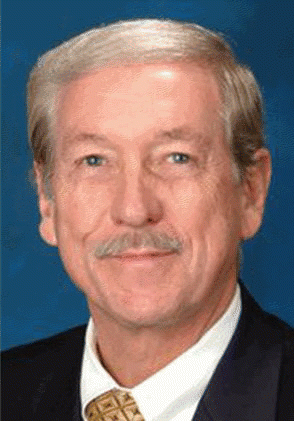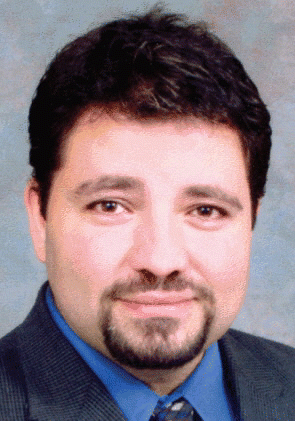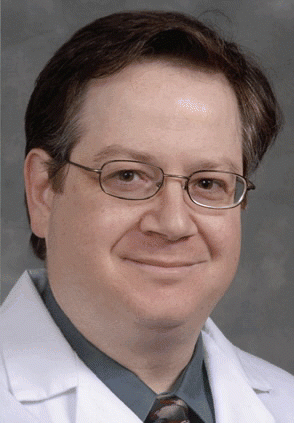Roger L. Crumley, MD, MBA, Professor and former Chair of the Department of Otolaryngology-Head and Neck Surgery at the University of California, Irvine School of Medicine, and current President of the American Laryngological Association, has no doubts about the advantages of laryngeal reinnervation over other treatments for unilateral vocal cord paralysis. After 30 years of performing the procedure and seeing what it has done for his patients, Dr. Crumley gives it the ultimate endorsement: I would certainly have it done. I think it’s a wonderful procedure!
Laryngeal reinnervation has the ability to restore phonation to near-normal after the healing period. So why is it not more widely embraced by otolaryngologists and patients? ENT Today recently talked with Dr. Crumley and other otolaryngologists experienced with laryngeal reinnervation about its advantages and disadvantages-and about its low profile as a useful treatment.
The Crux of the Technique
Patients with unilateral vocal fold paralysis can be treated by a variety of procedures, including injection laryngoplasty, thyroplasty, or reinnervation, explained Joel H. Blumin, MD, Chief of the Division of Laryngology and Professional Voice and Associate Professor of Otolaryngology and Communication Sciences at the Medical College of Wisconsin in Milwaukee. Dr. Blumin has performed the technique numerous times. He recently reported, with colleague Albert L. Merati, MD, Associate Professor and Chief of Laryngology Service in the Department of Otolaryngology-Head and Neck Surgery at the University of Washington School of Medicine in Seattle, on a series of patients who underwent either laryngeal reinnervation with nerve-nerve anastomosis or laryngeal framework surgery. They found that reinnervation was not associated with any additional risks over laryngeal framework surgery.1
 Strap muscle denervation seems to help move the vocal fold medially-an additional dynamic that improves vocal quality.
Strap muscle denervation seems to help move the vocal fold medially-an additional dynamic that improves vocal quality.
-Roger L. Crumley, MD, MBA
To perform the technique, the surgeon exposes the ansa cervicalis nerve, which overlies the great vessels or lies within the carotid sheath. A branch of the nerve is identified, followed, and divided at its insertion into the muscle, then moved into the region of the tracheoesophageal groove.2 There are no known consequences from ‘borrowing’ this nerve, which supplies the strap muscles of the neck, said Dr. Crumley. And, in fact, strap muscle denervation seems to help move the vocal fold medially-an additional dynamic that improves vocal quality.
The surgeon identifies the injured recurrent laryngeal nerve by retracting the superior thyroid neurovascular bundle laterally and inferiorly and dissecting posteriorly and inferiorly up to the point at which the nerve enters the larynx at the inferior horn of the thyroid cartilage. The nerve is divided at a suitable distance that will allow for 7 to 10 mm of unencumbered anastomosis with the ansa cervicalis nerve. Dr. Crumley explained that the surgeon puts three sutures into the two nerve ends, and nerve regeneration takes care of the rest. Following wound closure and recovery from anesthesia, the patient is usually kept overnight.
Dr. Merati and Dr. Blumin both noted that this procedure has a shallow learning curve. Said Dr. Merati, This procedure is relatively easy to perform compared to a thyroplasty, where the patient is awake and talking! George S. Goding Jr., MD, Associate Professor in the Department of Otolaryngology at University of Minnesota Medical School in Minneapolis, said that the results from the first case should be as good as after several cases. The primary challenge is identification of the donor and recipient nerves. The most critical aspect of the case is to do the surgery on the correct side. If the wrong side is reinnervated, bilateral vocal fold immobility and airway obstruction could result.
 There are thousands of patients every year whose physicians tell them that there is nothing that can be done for their hoarseness, and patients sit there, humbly, waiting for their voices to come back.
There are thousands of patients every year whose physicians tell them that there is nothing that can be done for their hoarseness, and patients sit there, humbly, waiting for their voices to come back.
-Albert L. Merati, MD
What It Does-and Doesn’t-Do
Vocal fold paralysis results from idiopathic and iatrogenic causes (including thyroidectomy, anterior cervical spine procedures, and even coronary artery bypass surgery). Whether due to known or unknown causes, the denervated vocal fold loses its stiffness, leading to inferior vibratory patterns of the two unequal vocal fold masses. The symptom most often noticed by patients is hoarseness, although in some cases dysphagia and aspiration may also be present. (Laryngeal reinnervation may not be advocated in the latter two cases, noted Dr. Blumin, because of the length of the healing period.) Vocal fold medialization-which can be accomplished by injection, arytenoid adduction, and thyroplasty-attempts to remedy this situation by pushing the denervated vocal fold closer to its medial position so that phonation is improved. The optimal medialization procedure has not been established-and none of these procedures restores vocal fold movement to the affected fold. However, many studies, including those by Dr. Crumley and others, such as Gerald S. Berke’s group at UCLA,3 have established that reinnervation improves vocal fold bulk and muscle tone. These improvements mean that the formerly paralyzed vocal fold, in conjunction with the normal opposite vocal fold, can produce improved phonation.
When we reinnervate a patient’s vocal cord after paralysis, we don’t restore normalcy, Dr. Blumin emphasized. That is, we don’t restore normal vocal cord motion. Like thyroplasty, adduction, or other techniques, we’re basically restoring the position of the vocal cord, and allowing the other vocal cord to contact that more efficiently and improve the voice.
Once the nerve has begun to be activated by the donor nerve, it appears to continue working for decades afterward, said Dr. Crumley. It usually takes from three to nine months for the voice to return to near-normal (this time frame may be longer for older patients). I have often found that the voice continues to improve-in quality or in expansion of pitch range-even years after surgery, added Dr. Goding.
Who Is Best Suited?
According to those interviewed for this article, a majority of patients with unilateral vocal cord paralysis would be eligible for the procedure. Because it is an open-neck procedure done under general anesthesia, laryngeal reinnervation is probably not advised in the very old or in patients with serious comorbidities. Still, Dr. Crumley noted that the procedure has been successful in people as old as 75, although these patients may experience longer delays in nerve growth. He also pointed out that for optimal results of the procedure, the ipsilateral vocal cord must be relatively normal.
 Like thyroplasty, adduction, or other techniques, we’re basically restoring the position of the vocal cord, and allowing the other vocal cord to contact that more efficiently and improve the voice.
Like thyroplasty, adduction, or other techniques, we’re basically restoring the position of the vocal cord, and allowing the other vocal cord to contact that more efficiently and improve the voice.
-Joel H. Blumin, MD
A Tough ‘Sell’?
The main advantage of reinnervation, sources agreed, is the potential for a near-normal voice. Another plus is that it uses no implants or other foreign materials. Indeed, this is often the deciding point for Dr. Blumin’s patients who choose to go with reinnervation after he discusses the various treatment options for unilateral vocal cord paralysis. People like that it’s natural, that it’s their body healing itself. And, they’re willing to wait the amount of time for the healing, he said.
And there’s the rub: Patients who receive injections or thyroplasty will notice an immediate voice improvement, whereas those who undergo reinnervation must be prepared to wait longer, he said. Some patients are not willing to delay their gratification. However, pointed out Dr. Crumley, injection of a temporary filler material (such as Zyplast collagen, Gelfoam paste, Cymetra paste, or Radiesse voice gel) can help bridge the gap between procedure and recovery of the voice. The injection, he said, usually wears off about the time that the reinnervation begins to work.
Dr. Crumley believes that resistance on the part of otolaryngologists may be one reason that the procedure is not performed more often. Recently, a head and neck surgeon pointed out to me that I’ve been proposing this procedure to the wrong crowd. Head and neck surgeons may be more comfortable with open procedures under general anesthesia than laryngologists, who tend to perform microdirect laryngoscopy, and have more office-based practices.
Further, there is the fact that outcomes from laryngeal reinnervation have not been prospectively compared with other medialization procedures. One multicenter trial, sponsored by the NIH and initiated in 2003 with Randal Paniello, MD, of the University of Washington in St. Louis as lead investigator, has now been discontinued. Dr. Merati bemoaned the lack of prospective, randomized data. One of the things that makes it hard to promote reinnervation is that the success of implants is pretty good, he said. So, without a randomized trial, it’s hard to show that reinnervation is better.
The Real Barrier
Still, Dr. Crumley asserted, Reinnervation is a proven procedure. He pointed to large series reported throughout the United States, Europe, and Asia. And Dr. Blumin believes that reinnervation is an option that really fits with some patients. Most of those interviewed here believe that reinnervation has the potential for growth. Dr. Crumley is planning to bring some worldwide experts in reinnervation to the ALA’s May 2009 meeting in Phoenix.
Dr. Merati believes there is an even bigger problem impeding the increased use of reinnervation: the reservoir of patients with vocal cord problems who are not referred to otolaryngologists. There are thousands of patients every year whose physicians tell them that there is nothing that can be done for their hoarseness, and patients sit there, humbly, waiting for their voices to come back. I can’t tell you how many times a week I see patients who say, ‘Wow, I was told there was nothing I could do, or that I had to wait for a year.’
In that sense, he said, trying to decide which treatment for paralysis is the best is a wonderful question to have!
References
- Blumin JH, Merati AL. Laryngeal reinnervation with nerve-nerve anastomosis versus laryngeal framework surgery alone: a comparison of safety.
- Otolaryngol Head Neck Surg 2008;138(2):217-20. 2. Crumley RL, Izdebski K, McMicken B. Nerve transfer versus Teflon injection for vocal cord paralysis: a comparison. Laryngoscope 1988;98:1200-4. 3.
- Chhetri DK, Gerratt BR, Kreiman J, Berke GS. Combined arytenoid adduction and laryngeal reinnervation in the treatment of vocal fold paralysis. Laryngoscope 1999;109(12):1928-36.
©2009 The Triological Society
Leave a Reply